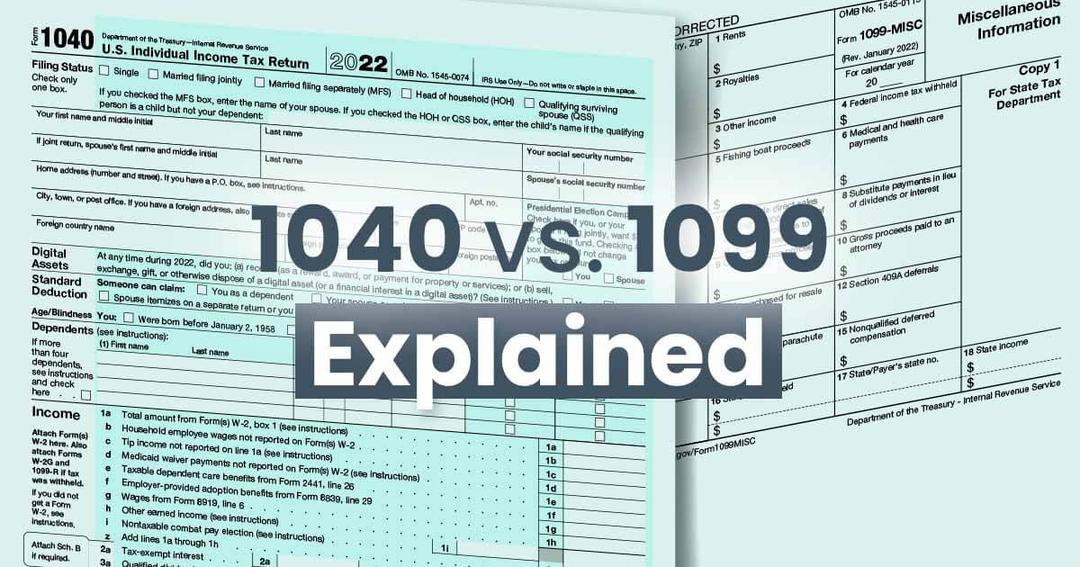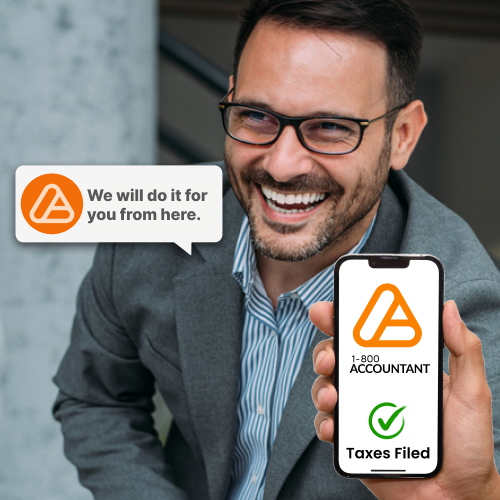
Reporting taxable income to the Internal Revenue Service (IRS) isn't always a straightforward process. There are over 800 tax forms, from individual documents to information returns, which can create confusion and questions. This includes the common question: what is the difference between 1040 and 1099 tax forms?
IRS Form 1040 and 1099 are pivotal for tax purposes and income reporting. Form 1040, or U.S. Individual Income Tax Return, is the main tax form used to report annual income and claim deductions, credits, and other adjustments. On the other hand, Form 1099 is a series of forms used to report various income received throughout the tax year, such as interest, dividends, self-employment income, and more. This great blog will help you understand the difference between 1040 vs 1099 forms, along with detailed tips to help you fill out each.
What Is a 1040 form?
Form 1040 is the most common IRS form taxpayers use to file their annual tax returns. It includes reporting income and calculating federal income tax liability. Both employees and independent contractors are expected to complete and submit a 1040 tax form annually by the tax reporting deadline.
You’ll need to include income from employee (W-2) jobs and freelance (1099) jobs on this form. It tells you two things: what you owe and how much you’ll get back.
Each section of Form 1040 serves a specific purpose:
- Contact information – Taxpayers provide their personal information and state whether they’re single, married, and, if so, filing jointly or separately.
- Reporting additional income – This section lists the taxpayer’s income, including wages, salaries, and other forms of earned income, as well as unearned income from sources like investments. You’re also expected to include refunds, credits, or offsets.
- Calculating the adjusted gross income (AGI) – This section determines your AGI. This is the total income you received during the tax year, minus deductions and exemptions, such as small business expenses, health savings account (HSA) deductions, or IRA contributions.
- Calculating tax liability – After calculating your AGI, you can apply the correct tax rate to this figure, accounting for any other deductions, such as the child tax credit, which could reduce your tax liability.
- Report taxes owed or refunds due – If you owe taxes, the final section is the palace where you pay. If you are owed money back, you can select whether you want that deposited directly into your bank account or as a check.
Tips on How to Fill out a 1040 Form
Use these great tips to help you avoid costly mistakes when filling out your Form 1040.
#1 Gather All of the Relevant Documentation
To properly fill out your 1040 form, you’ll need access to all relevant documents for reporting earned income, expenses, and deductions, such as your W-2, 1099 forms, donations, receipts, and so on.
Organizing and maintaining a comprehensive paper trail will not only make filing taxes easier but also helps you defend yourself in the event of a tax audit.
#2 Understand Your Filing Status
As the IRS notes, “Your filing status is used to determine your filing requirements, standard deduction, eligibility for certain credits, and your correct tax.”
This will play a key role in your estimated tax rate and deduction and exemption eligibility. When it comes to selecting filing status, you typically have one of five options:
- Single
- Married filing jointly
- Married filing separately
- Head of household
- Qualifying widow(er)
#3 Claim All Deductions and Credits
You should be aware of all of the deductions and credits you are eligible to claim.
These will depend on your specific circumstances, but they could include items like children's tax credits, charitable contributions, or work-related expenses. By claiming as many deductions and credits as you’re legally entitled to, you can lower your tax liability.
The 1040 form is brief, so you’ll need to attach additional forms if you have other types of income, tax credits, or tax deductions.
#4 Double-Check Your Calculations
Before you submit your 1040, be sure to double-check your calculations so that no errors are present. It can be helpful to refer to this guide on how to complete form 1040 accurately.
You could face increased tax liability or penalties if mistakes are missed. By carefully reviewing your work, you can file your taxes confidently.
#5 File Your Taxes on Time
In normal circumstances, the tax filing deadline arrives on April 15th. If you’re unable to file your federal income tax return by this date, you can request an extension, though you’ll still be expected to pay an estimate on any taxes owed. How do you ensure it arrives on time?
- If you file by mail – The envelope must be properly addressed, have the correct postage, be postmarked, and be deposited in the mail by the due date.
- If you file electronically – You must electronically submit the documents before the due date. This information will be contained within the electronic files and metadata. The IRS will usually send an email or text message verifying that they have received and accepted your return.
What Is the 1099 Form?
Practically every taxpayer will be expected to complete a Form 1040, so long as they earn above a certain income threshold. However, if a person earns non-employee income, they may also be expected to fill out a 1099. The income reported on the 1099 form will eventually be added to a line on the 1040 form.
For example, if you’re self-employed or run a small business, you may be required to use a 1099 form to report your income. Contracted work, such as consulting or freelance, also falls under this tax bracket, which has become a major category thanks to the rise of the gig economy.
Today, independent contractors who earn at least $600 in annual income as freelancers or self-employed workers are expected to file a 1099–NEC.
A 1099 tax form is used to report various types of income that are unrelated to salary or wages. There are several variations of a 1099, including:
- Form 1099-INT – Reports taxable interest income
- Form 1099-DIV – Reports dividend income
- Form 1099-B – Reports capital gains and losses
- Form 1099-MISC – Reports miscellaneous forms of income such as rental income or royalties
Even if you have a salaried job, you may still need to fill out a 1099 form. For instance, if you rent out an additional dwelling unit (ADU), you may receive a 1099-MISC form from your tenants to report miscellaneous income.
Tips on How to fill out a 1099 Form
Like your 1040 form, there are several best practices to implement when filing your 1099 form to spare you time, money, and potential legal issues.
#1 File the Right 1099 Form
Since there are several different types of 1099s, it can be confusing to know what type of 1099 you need. It is critical to know how to fill out and submit the correct one.
Depending on your situation, you may only need to fill out one 1099 form, or you may be expected to fill out several different forms.
You should double-check to ensure that you receive a 1099 form for any income you received aside from salary or wages. Typically, that will be sent over from the person or organization that paid for your services. But, if you do not receive a 1099, you’re still responsible for reporting that income on the tax return.
#2 Don’t Forget State Taxes
In addition to federal taxes, you may also be responsible for paying state and local taxes on the additional income. Be sure to include 1099 income on your state and local tax returns as well.
#3 Don’t Write off Personal Expenses
When you operate independently, especially if you work at home, the waters between personal and business expenses can get quite murky.
For instance, if you use a phone or computer for both business and personal reasons, can you write it off?
You may be able to write off a portion of that. But not all. You can only deduct the percentage that is used exclusively for business purposes.
#4 Pay Quarterly Taxes
If you’re self-employed and owe at least $1,000 in taxes, you’re expected to pay your federal income taxes quarterly. To that end, you must accurately estimate and pay your quarterly taxes by the following dates in 2023:
- April 18, 2023
- June 15, 2023
- September 15, 2023
- January 16, 2024
Failure to pay quarterly taxes can result in fines and penalties. Most small businesses will also have to pay federal estimated taxes each quarter.
Work with the Form 1040 and Form 1099 experts
Filing taxes is rarely a straightforward process — no matter what form you’re filing, and calculating your sources of income and deductions can be challenging. That’s where 1-800Accountant can help. We’ll match you with a tax expert who knows the ins and outs of your industry and state tax rules. Whether you have small business taxes or are a salaried employee, we can save you time and frustration, and maximize your tax savings.
This post is to be used for informational purposes only and does not constitute legal, business, or tax advice. Each person should consult his or her own attorney, business advisor, or tax advisor with respect to matters referenced in this post. 1-800Accountant assumes no liability for actions taken in reliance upon the information contained herein.

